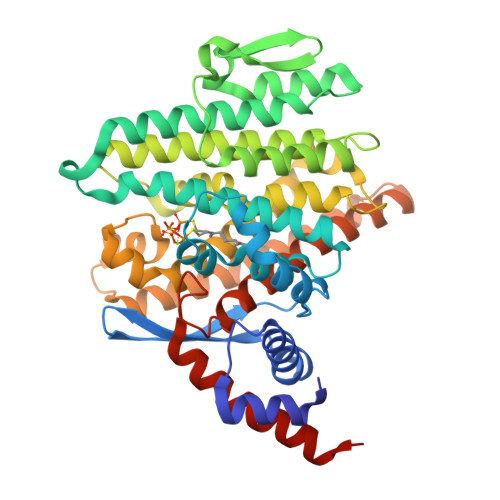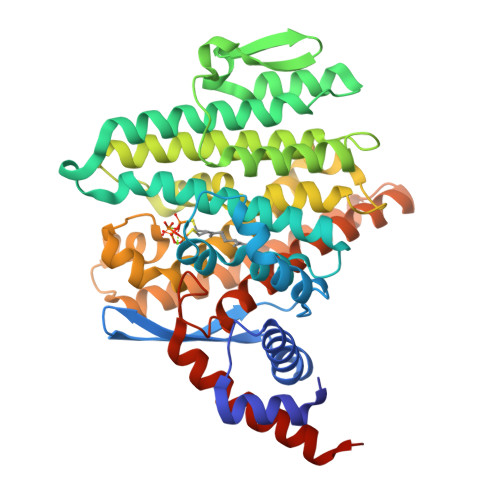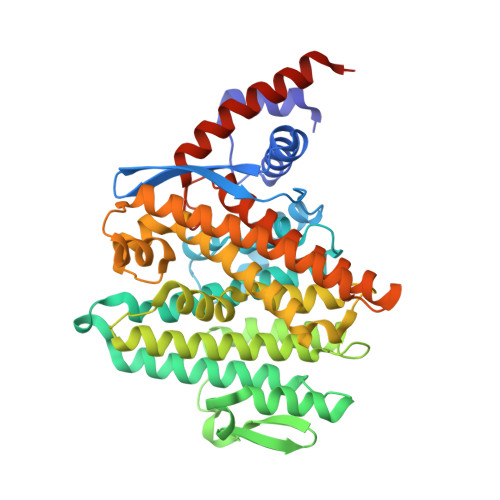Algal neurotoxin biosynthesis repurposes the terpene cyclase structural fold into anN-prenyltransferase.
Chekan, J.R., McKinnie, S.M.K., Noel, J.P., Moore, B.S.(2020) Proc Natl Acad Sci U S A 117: 12799-12805
- PubMed: 32457155
- DOI: https://doi.org/10.1073/pnas.2001325117
- Primary Citation of Related Structures:
6VKZ, 6VL0, 6VL1 - PubMed Abstract:
Prenylation is a common biological reaction in all domains of life wherein prenyl diphosphate donors transfer prenyl groups onto small molecules as well as large proteins. The enzymes that catalyze these reactions are structurally distinct from ubiquitous terpene cyclases that, instead, assemble terpenes via intramolecular rearrangements of a single substrate. Herein, we report the structure and molecular details of a new family of prenyltransferases from marine algae that repurposes the terpene cyclase structural fold for the N -prenylation of glutamic acid during the biosynthesis of the potent neurochemicals domoic acid and kainic acid. We solved the X-ray crystal structure of the prenyltransferase found in domoic acid biosynthesis, DabA, and show distinct active site binding modifications that remodel the canonical magnesium (Mg 2+ )-binding motif found in terpene cyclases. We then applied our structural knowledge of DabA and a homologous enzyme from the kainic acid biosynthetic pathway, KabA, to reengineer their isoprene donor specificities (geranyl diphosphate [GPP] versus dimethylallyl diphosphate [DMAPP]) with a single amino acid change. While diatom DabA and seaweed KabA enzymes share a common evolutionary lineage, they are distinct from all other terpene cyclases, suggesting a very distant ancestor to the larger terpene synthase family.
Organizational Affiliation:
Center for Marine Biotechnology and Biomedicine, Scripps Institution of Oceanography, University of California San Diego, La Jolla, CA 92093.




















